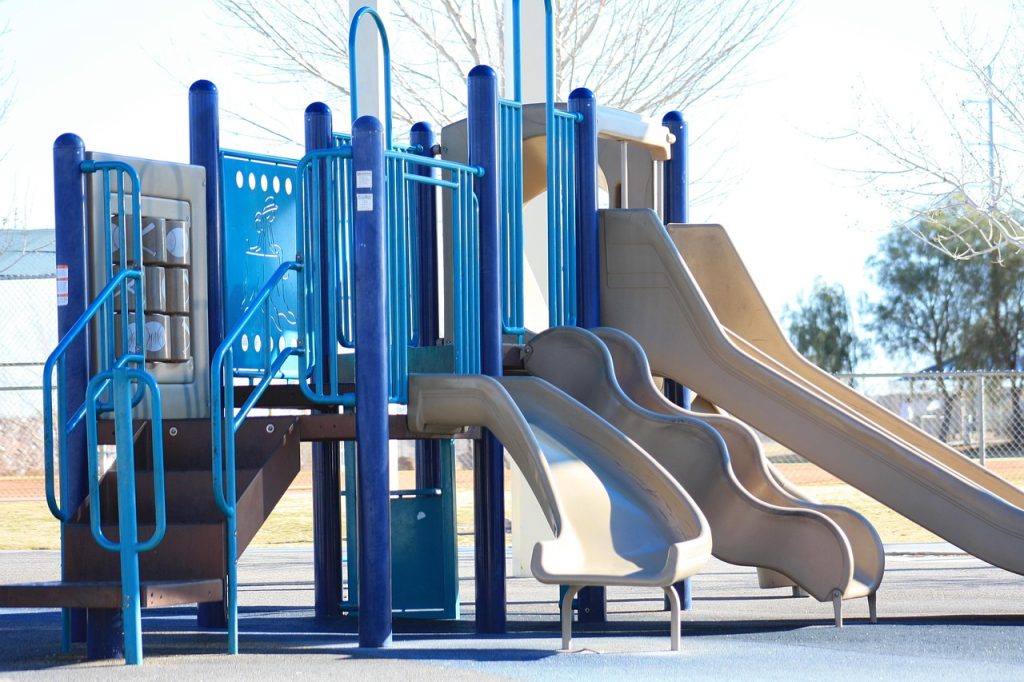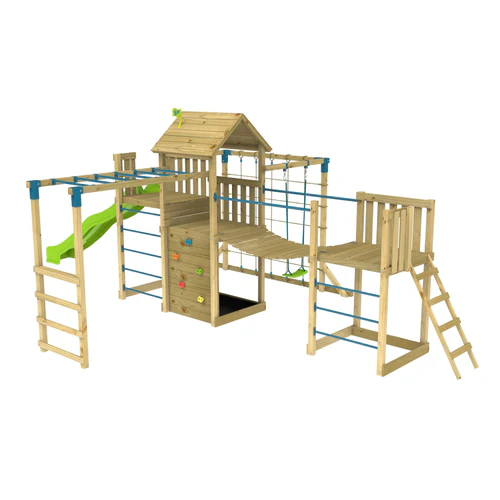Table of Contents
In a world increasingly dominated by screens and structured routines, the simple joy of outdoor play can often be overlooked. Yet, giving children the freedom to explore, climb, jump, and imagine outdoors is one of the most valuable gifts parents can offer. Outdoor play isn’t just about letting off steam—it’s a vital part of healthy development, creativity, and emotional well-being. From wooden climbing frames to the bounce of a trampoline, the great outdoors offers endless opportunities for adventure, growth, and joy.

A Natural Space for Growth
Children are naturally curious and energetic. Outdoor environments encourage them to test boundaries, take small risks, and engage in imaginative play—all of which are essential for growth. Whether they’re scaling the side of a wooden climbing frame or inventing a game in the garden, they are learning to solve problems, work with others, and navigate challenges.
Playing outdoors provides children with a multi-sensory experience. They feel the texture of grass, hear birds chirping, and observe clouds moving across the sky. These sensory inputs not only enhance cognitive development but also help children feel more connected to the world around them.
Building Strength, Balance and Confidence
Physical activity is essential for children, and the outdoors is the perfect playground for building strength and coordination. Activities like climbing, running, jumping, and balancing work different muscle groups and help improve motor skills. A trampoline, for example, is not just great fun—it promotes balance, strengthens the core, and encourages aerobic exercise in a way that feels more like play than effort.
Wooden climbing frames are another fantastic addition to any garden or play area. Designed to challenge children at various skill levels, these structures help kids build upper body strength, grip, and confidence as they learn to conquer each level or obstacle. There’s nothing quite like the triumphant smile of a child who’s just made it to the top for the first time!
Moreover, when children accomplish physical tasks—like climbing higher than before or learning a new trick on the trampoline—they gain a real sense of achievement. These successes build self-esteem and resilience, which are valuable skills that extend far beyond the playground.
Stimulating Imagination and Creativity
The outdoors is a blank canvas where anything is possible. A patch of grass becomes a jungle, a stick transforms into a magic wand, and a climbing frame might be a pirate ship. Unlike many indoor toys that dictate how they should be used, outdoor play often encourages open-ended adventures. Children take the lead, inventing scenarios and roles that allow their imaginations to soar.
Wooden climbing frames, with their towers, ladders, and hideaways, are particularly inspiring. One day they’re castles under siege, the next they’re secret headquarters or tree-top lookouts. These imaginative games not only entertain but also develop storytelling skills, social communication, and creative thinking.

Encouraging Social Skills and Teamwork
Outdoor play is often a shared experience. Whether with siblings, friends from school, or neighbours, children learn important social skills while playing outside. They negotiate rules, take turns, resolve conflicts, and work together toward shared goals.
A game of ‘bounce and catch’ on the trampoline, a race across the lawn, or a shared mission to conquer the highest rung of the climbing frame naturally brings children together. These interactions are more dynamic and spontaneous than structured classroom activities and often lead to stronger friendships and improved emotional intelligence.
A Healthy Dose of Fresh Air
Spending time outside isn’t just beneficial for physical health—it also does wonders for mental well-being. Being in nature reduces stress, improves mood, and helps children regulate their emotions more effectively. Natural light boosts vitamin D levels, which is essential for healthy bones and immune systems, especially in growing children.
Children who regularly play outdoors tend to sleep better, focus more in school, and display fewer behavioural problems. In a world where many children are experiencing increased screen time and anxiety, the calming, restorative effects of the outdoors are more important than ever.
Limiting Screen Time, the Natural Way
One of the biggest challenges for modern parents is managing screen time. Tablets, televisions, and smartphones are often a source of conflict and concern. Encouraging outdoor play provides a positive and proactive alternative. When children are engaged in exciting, physical, and imaginative activities outside, they’re far less likely to crave digital distractions.
Introducing elements like a trampoline or a well-designed wooden climbing frame into your outdoor space can make all the difference. These additions don’t just occupy children—they actively draw them outside, giving them a reason to unplug and re-engage with the real world.
Creating Safe and Inspiring Outdoor Spaces
Of course, parents want their children to explore freely, but safety is a valid concern. The key is to create outdoor environments that allow for age-appropriate risks within safe boundaries. High-quality equipment like wooden climbing frames with sturdy construction and safety features can give parents peace of mind while still challenging their children physically and mentally.
Likewise, trampolines with safety enclosures and padding can provide hours of entertainment and exercise without compromising on safety. It’s also important to supervise younger children and establish ground rules for how play areas should be used.
Instilling a Lifelong Love for Nature
Children who play outside regularly are more likely to develop a lasting appreciation for the natural world. Whether it’s discovering a ladybird, planting flowers, or simply watching the sunset, these moments foster a sense of wonder and respect for the environment.
This connection to nature has long-term benefits, encouraging environmentally conscious behaviour and a deeper understanding of the planet we call home. It’s a beautiful cycle—children who love the outdoors tend to protect it, ensuring future generations can enjoy it too.

Final Thoughts
Letting children roam and play outdoors isn’t a luxury—it’s a necessity. In a world that often feels rushed and overly structured, the freedom to explore the garden, climb a frame, or bounce on a trampoline can be a breath of fresh air—for both children and parents.
As adults, we can’t always join our kids on every adventure. But by creating outdoor spaces that are safe, exciting, and filled with opportunity, we’re giving them the tools they need to grow strong, confident, and creative. So open the door, step aside, and let your little explorers roam free. You might just be amazed at what they discover.

